[From the Scene] Civilian tours resume on southern side of JSA
With negotiations on free movement in JSA ongoing, visitors from North wave to South
By Jo He-rimPublished : May 1, 2019 - 16:11
PANMUNJOM -- Chatter and the sound of camera clicks broke the stillness at the Joint Security Area in the inter-Korean border village of Panmunjom, as civilian tours at the southern side of the JSA resumed Wednesday.
Some 81 visitors, consisting of the Unification Ministry’s civilian advisory committee and student reporters, entered the southern part of the JSA along with dozens of reporters from local and foreign news outlets.
Some 81 visitors, consisting of the Unification Ministry’s civilian advisory committee and student reporters, entered the southern part of the JSA along with dozens of reporters from local and foreign news outlets.
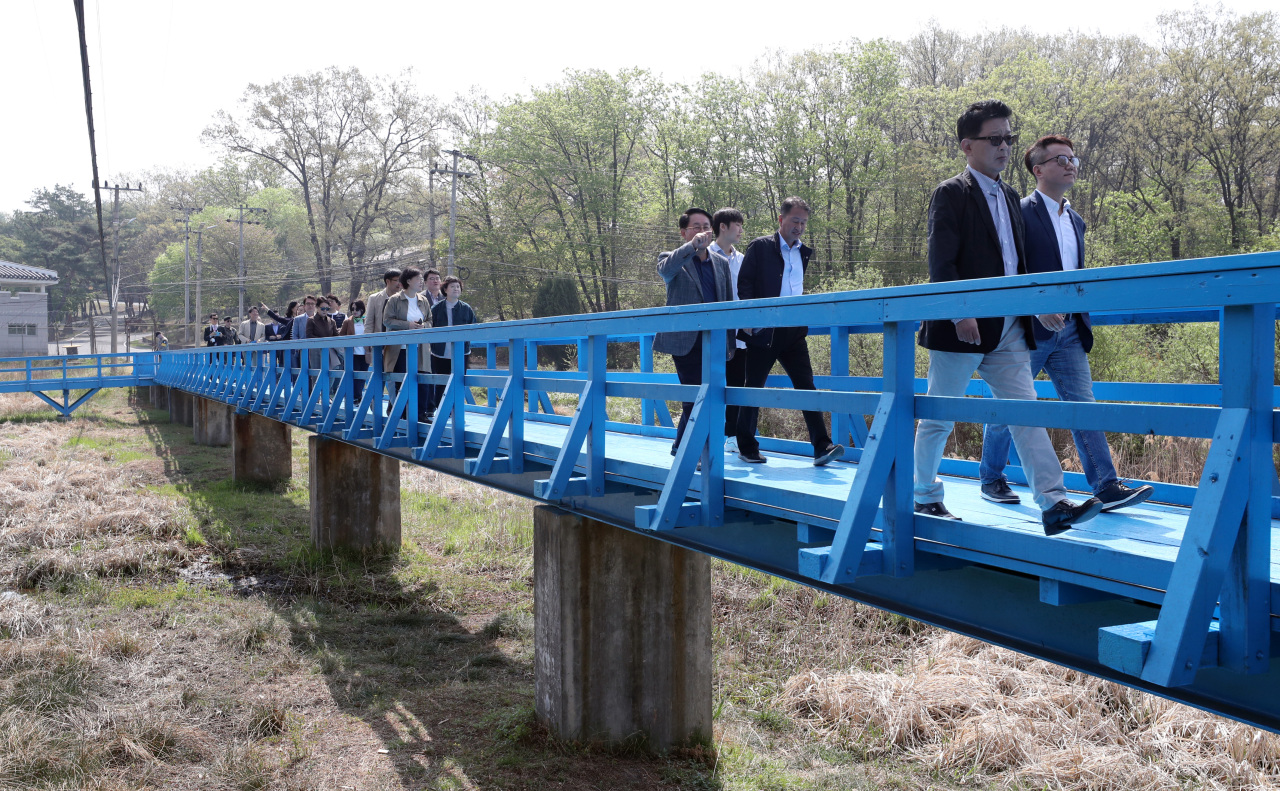
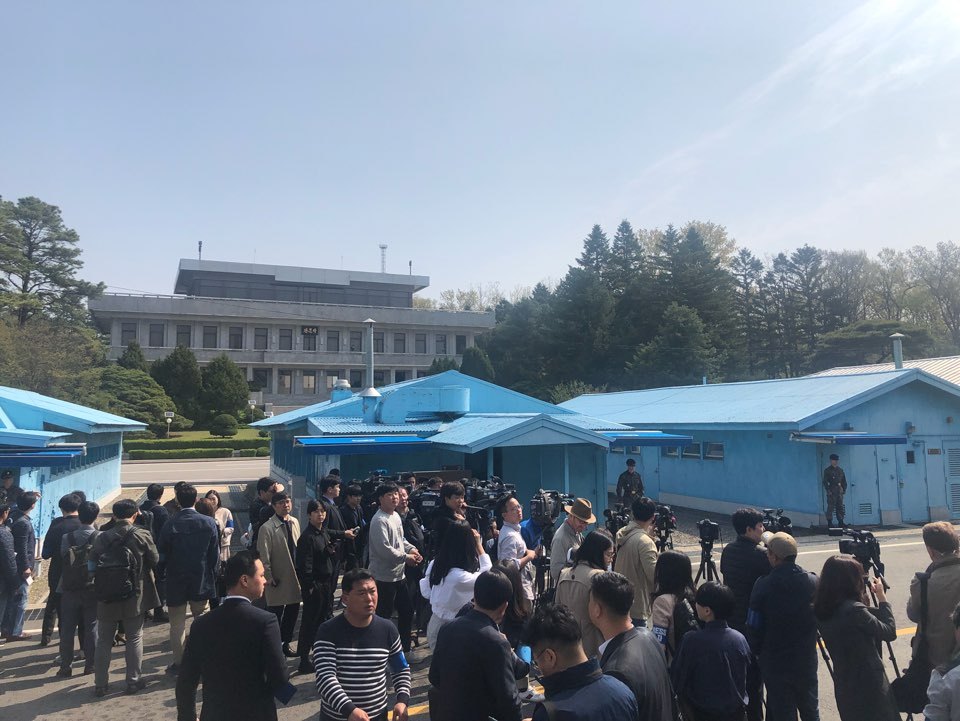
“Personally, it is a touching experience for me to be able to visit this place where the inter-Korean summit was held in April,” Kim Jeong-soo, head of the Women Making Peace civic group said, referring to the first summit between President Moon Jae-in and North Korean leader Kim Jong-un on April 27, 2018.
The popular civilian tour to the JSA is resuming after a suspension of some six months. It was halted following a military agreement signed in September 2018 that included demilitarizing the area.
The two Koreas removed land mines in the Demilitarized Zone, banned the carrying of all weapons there and sought to remove the Military Demarcation Line inside the JSA to allow visitors to freely move around both the southern and northern sides.
But as an agreement on a joint code of conduct for such free movement inside the JSA has yet to be drawn up, the South Korean government and United Nations Command, which oversees activities inside the DMZ, decided to resume the tours -- covering only the southern side as before.
However, the tour now includes the blue footbridge where Moon and Kim walked side by side shared a private conversation during the first summit. The pine tree the two leaders planted to commemorate the historic summit is also accessible to visitors.
The footbridge, however, will be closed for a couple of weeks to undergo reinforcement to provide better access to seniors and disabled people.
Another major change is that the area has now been disarmed.
“What once was a vibe of tension is now a vibe of peace. We’ve taken away the land mines and we’ve taken out weapons out of the towers and now our guards no longer carry weapons,” JSA battalion commander Lt. Col. Sean Morrow told reporters.
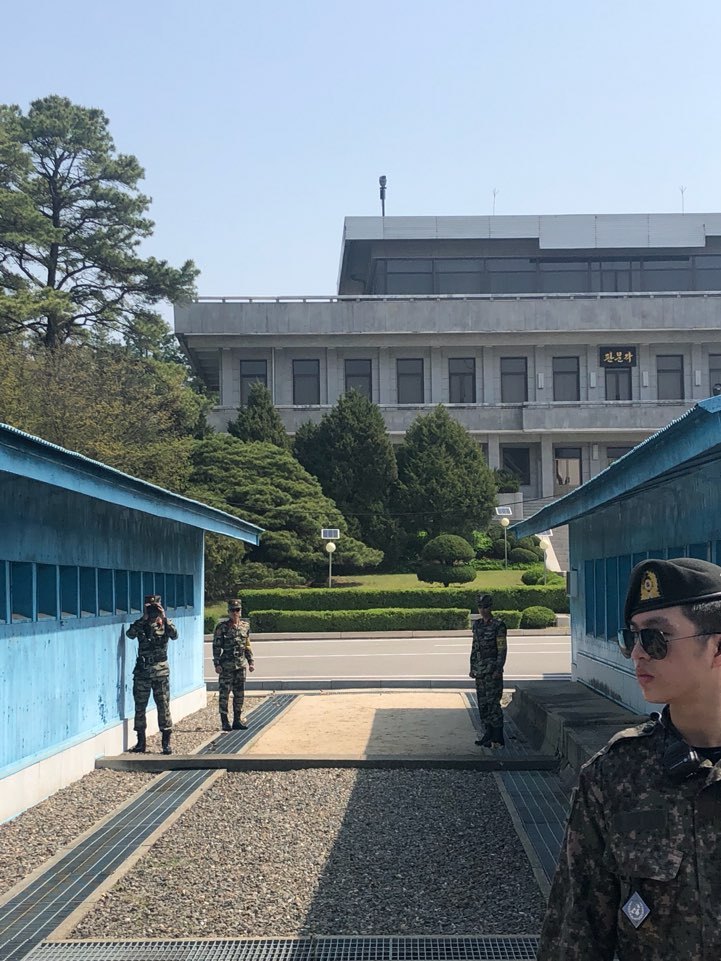
He also elaborated that, while they specifically never engaged with the North Koreans before, they now acknowledge and say good morning to them.
“We do get acknowledgement back. In the past we never did. We will get a smile or a head nod. It’s not a long engagement, unless it’s a planned engagement.
“We look forward to preserving this (area) as a place for dialogue and a place where we can earn trust and build confidence to spread peace around the Korean Peninsula.”
On the northern side of the JSA, three North Korean military officers, wearing an armband emblazoned “Panmunjom Police” in Korean, were seen observing the southern side of the MDL, one of them taking pictures of the crowd.
Dozens of tourists were also seen at Panmungak, a North Korean building located on the northern side of the JSA, looking to the South. While Seoul temporarily closed the tour program after the military pact was signed, Pyongyang “never slowed down” with its tour program, Lt. Col. Morrow explained, adding that, while the details were not shared, some 100 to 900 tourists a day appear to visit the northern side of the JSA.
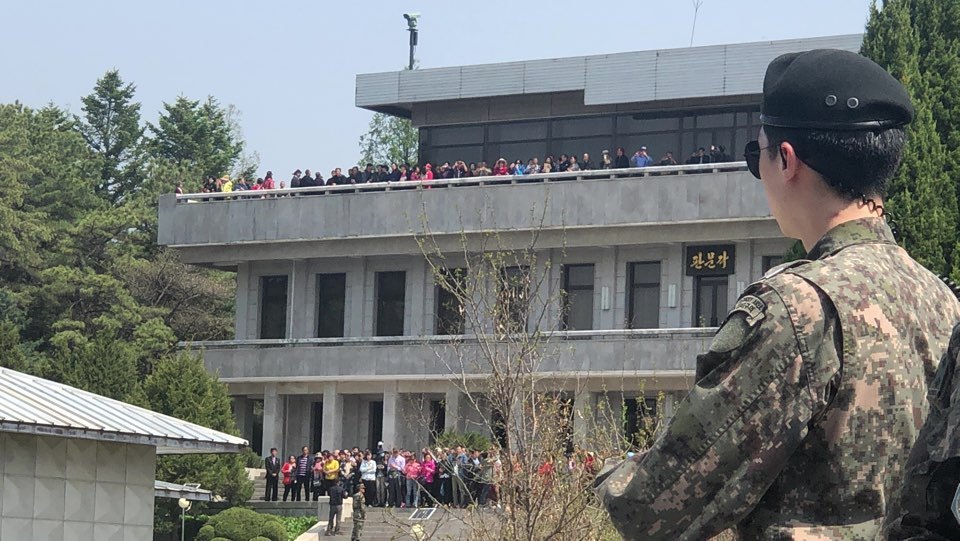
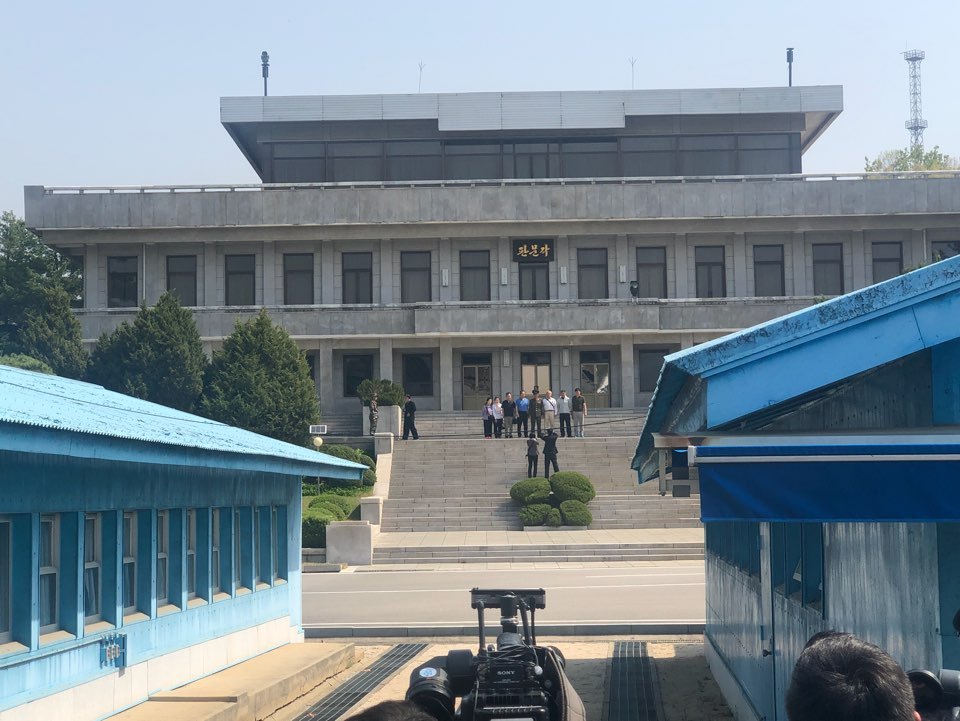
Another official from the UNC said the tourists are thought to include not only North Koreans, but also foreign travelers, largely from China and Russia. For North Korea, the JSA tour program is thought to be one of the ways for the regime to earn foreign currency.
“The footbridge is not as wide as I imagined. It is exciting to see the bridge where the two leaders shared the dialogue that would change the fate of the Korean Peninsula,” said a visitor surnamed Kim.
Jeong Il-young, a researcher at IBK Economic Research Institute, also expressed hope for the relationship between North Korea and the United States to improve, and for the two Koreas to meet again at Panmunjom.
“I think the looks of the soldiers of both Koreas are brighter. I would really like to go to the northern side (of Panmunjom),” said Jeong, who has visited the JSA before.
The tour program runs four times a day with each program accommodating about 82 South Koreans and foreign visitors. While foreign visitors can register for the tour through private tour companies, South Korean nationals can only apply for the program through the National Intelligence Service, and in groups of 30 to 45 people, on security reasons.
By Jo He-rim (herim@heraldcorp.com)










![[Hello India] Hyundai Motor vows to boost 'clean mobility' in India](http://res.heraldm.com/phpwas/restmb_idxmake.php?idx=644&simg=/content/image/2024/04/25/20240425050672_0.jpg&u=)








